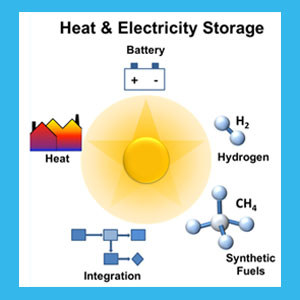Speakers
Prof.
Katharina Fromm
(University of Fribourg, Chemistry department)Dr
Nam Hee Kwon
(University of Fribourg, Chemistry department, Fribourg, Switzerland)
Description
Advanced lithium ion batteries require higher safety, lower cost, longer durability and lower toxicity to apply larger applications [1].
LiMnPO4 can be an alternative cathode material due to its stable structure, low material cost, lower toxicity, high theoretical capacity (170 mAh/g), high operating voltage (4.1 V vs. Li) and good capacity retention. However, it suffers from poor electronic and ionic conductivity [2, 3]. Its poor ionic conductivity can be overcome by employing nano-particles in order to shorten Li-ion path lengths [4, 5]. Enhancement in electron transport is achieved by carbon coated nanocomposite cathode material [6, 7]. Most high-performing LiMnPO4 materials were so far achieved by adding a large amount of carbon (15 – 30 wt%) in order to increase the electronic conductivity [8,9]. Recently, we reported < 30 nm sized nano-LiMnPO4 reached 97 % of theoretical capacity with 10 wt% of carbon additive in total in the electrodes [10]. We investigated further to study the favorable direction for lithium ions in different shapes of nano-LiMnPO4 and the desired composite structure to improve the electrochemical properties.
Since olivine LiMnPO4 materials have one preferred direction of lithium ion diffusion in the lattice, we synthesized various shapes and sizes of nano-LiMnPO4 (Fig. 1). Chemically exfoliated graphene from graphite flake was applied to nano-LiMnPO4, forming a thin coating on the surface of the active material (Fig. 2).
Afterwards, we determined the lithium ion diffusion coefficients in terms of shapes and sizes of LiMnPO4 nanomaterials using an electrochemical technique of cyclic voltammetry (Table. 1).
Author
Dr
Nam Hee Kwon
(University of Fribourg, Chemistry department, Fribourg, Switzerland)
Co-authors
Dr
Edafe Fabio
(University of Fribourg, Chemistry department)
Hui Yin
(University of Fribourg, Chemistry department)
Prof.
Katharina Fromm
(University of Fribourg, Chemistry department)
Tatiana Vavrova
(University of Fribourg, Chemistry department)

